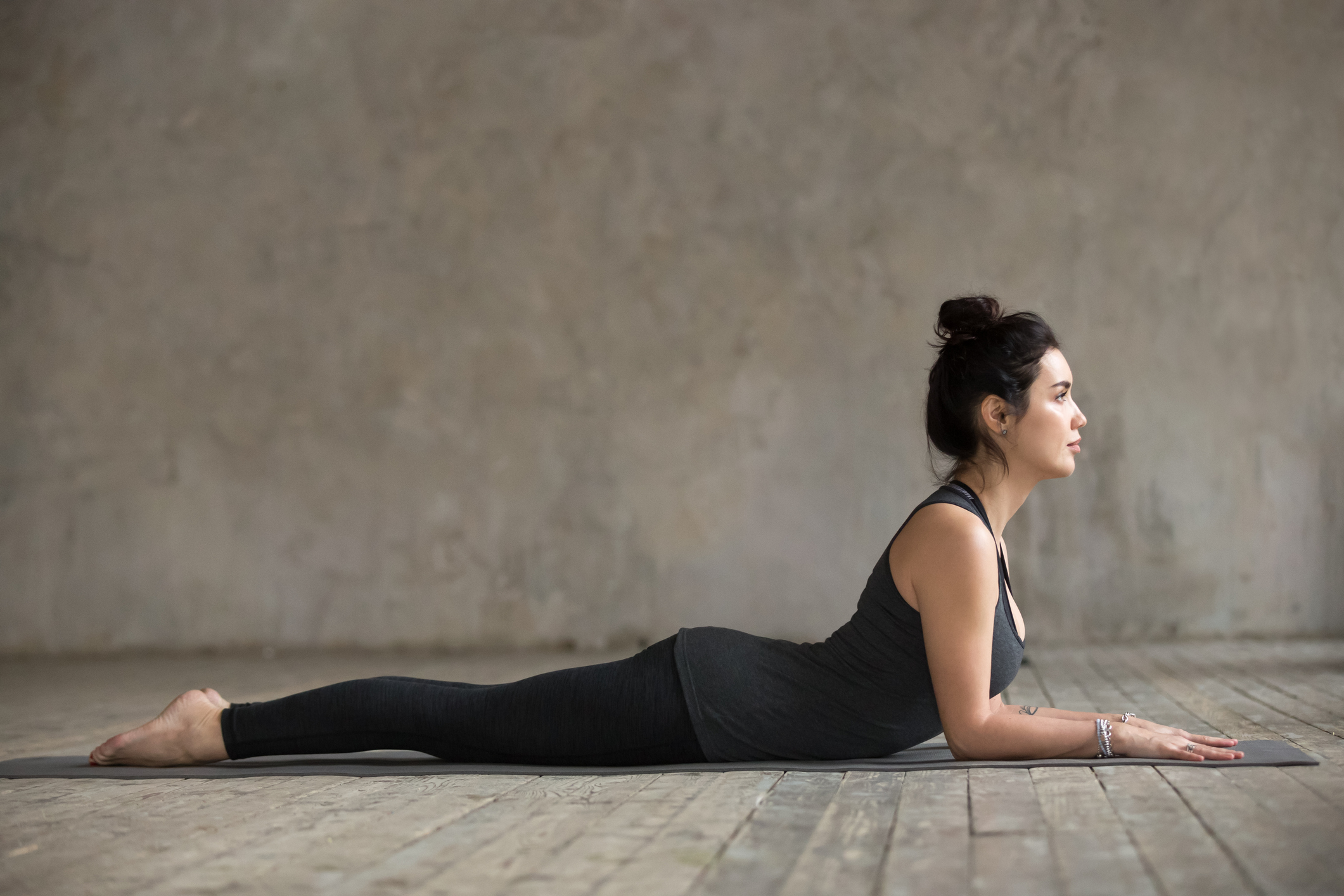Sphinx

Steps:
- Lie on your belly, legs side by side. Firm your tailbone toward your pubis and lengthen it toward your heels. The, rotate your thighs inwardly by rolling your outer thighs toward the floor. This helps broaden and lengthen your lower back and sacrum (the downward-facing triangular bone at the back of your pelvis) to protect it in a back bend.
- Reach actively through your toes to the wall behind you. As you move into the pose, be sure to continue lengthening your tail toward your heels to protect your lower back. Your buttocks should be firm but not clenched while your legs are active, your tongue, eyes, and brain should be quiet.
- Now set your elbows under your shoulders and your forearms on the floor parallel to each other. Inhale and lift your upper torso and head away from the floor into a mild back bend.
- The final step to building a solid foundation in Sphinx Pose is to bring awareness to your lower belly, the area just above the pubic bone and below the navel. Lightly draw it away from the floor to create a dome that rounds up toward your lower back. This is very subtle-no sucking in, hardening, or rigidity required. This belly lift supports and distributes the curvature of your back bend more evenly along the length of the spine, soothing your lower back and awakening your upper back.
- Stay for five to 10 breaths, then exhale and slowly release your belly and lower your torso and head to the floor. Turn you head to one side. Lie quietly for a while, broadening your back with each inhale, and releasing any tension with each exhale. Repeat once or twice more if you like.
Modifications and props:
You may want to place a folded blanket under your front hip points to cushion. You could also place a block between your hands to help space your hands and elbows.
Benefits:
Strengthens the spines; Stretches chest and lungs, shoulders, and abdomen; Firms the buttocks; Stimulates abdominal organs; Helps relieve stress
Contraindications:
Headache; Serious back injury
